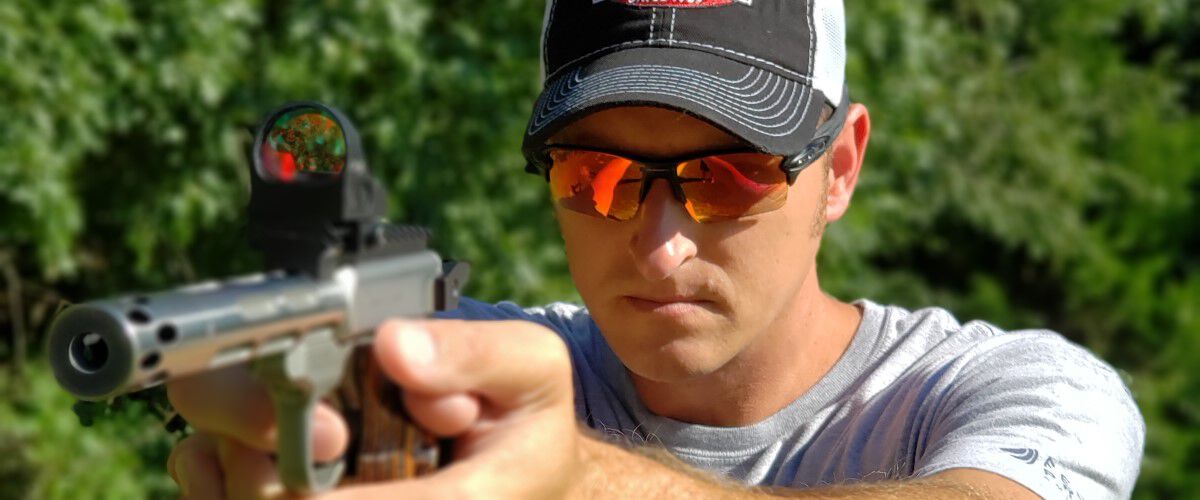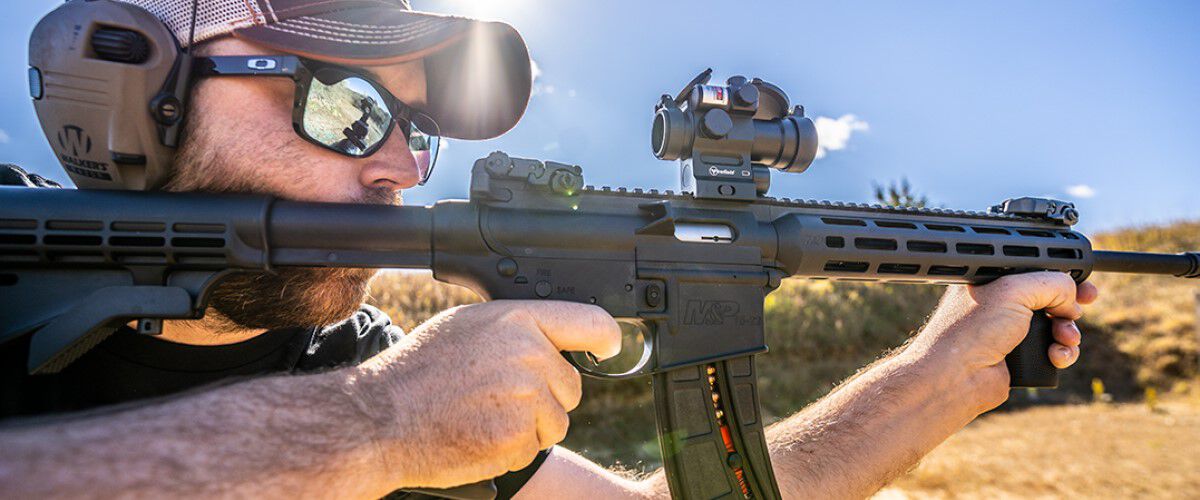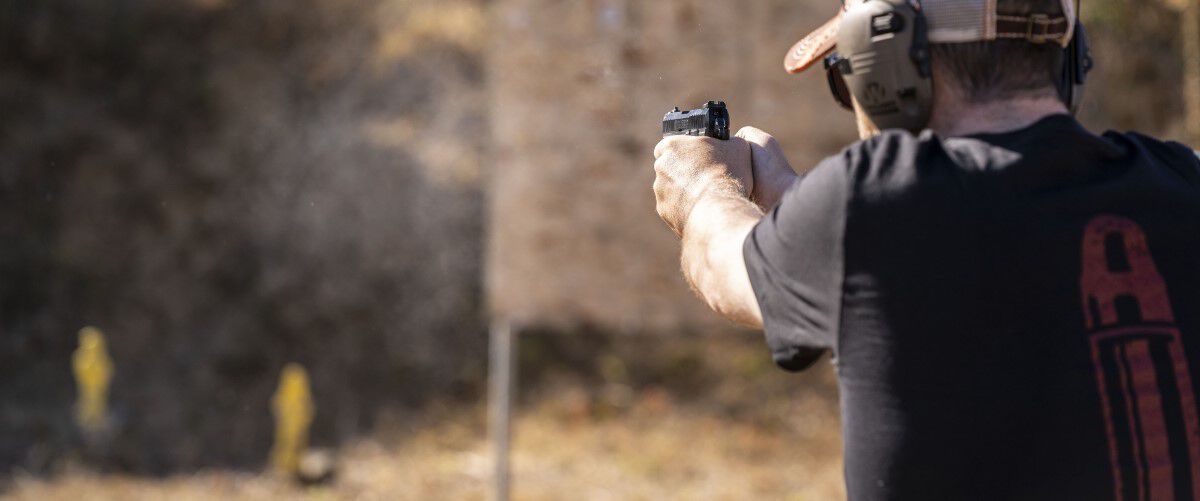Get Moving

Plinking is a riot—the smaller the target, the bigger the thrill. But for those looking to up the ante, motion is where it’s at. “Shooting small moving targets is a blast,” says CCI ambassador 22plinkster. “It takes true skill and will make you a much better all-around shooter.”
Who better than this master of all things plinking to provide tips for those looking to start smashing moving targets with their rimfires?
Tip 1: The Setup
Take a 5- or 6-foot tall garden hanging hook—the ones shaped like a shepherd’s staff—and hang a peppermint candy from them. 22plinkster uses dental floss and small-diameter fishing line to attach the peppermint, then lets them swing.

“I have these hooks hanging all over my yard,” he says. “Start shooting at 20 feet, and then move back to 30 feet, 40 feet and so on. Your skills will get really sharp. Plus, when you hit the candy, they vaporize. The feedback of the hit is immediate, which is fun and boosts confidence.”
Tip 2: Open Sights Vs. Red Dot
According to 22plinkster, shooting moving targets with open sights is much more difficult than shooting them with a red dot. When shooting open sights, he recommends right-handed shooters squint their left eye (left-handed shooters the right eye) to better help with concentration and focus.

When shooting a moving target with open sights, shooters need to focus on the rear sight, the front sight and the moving target. This is where the squinting comes into play. When shooting with a red dot sight, it’s recommended right-handed shooters look ahead of the target with the left eye when the target is swinging or moving right to left. Left-handed shooters should do just the opposite. The focus should be on the leading edge of the target.
Tip 3: Tracking
Tracking is essential to consistently hitting a moving target. It requires the shooter to move their pistol or rifle at the same speed. The aim should be at the front two-thirds of the target. A small lead is all that’s necessary to connect.
“You can also ambush the target,” says 22plinkster. “Ambushing simply means letting the target swing in front of the sights for a period of time. Once the shooter has the timing down, they can apply gentle pressure to the trigger when everything aligns.”
Tip 4: Trigger Control
22plinkster feels many shooters miss moving or swinging targets due to an improper trigger pull. A moving target tends to get a shooter excited, which can cause them to jab at the trigger. When a right-handed shooter does this, the barrel of the gun pulls to the right. When a lefty does it, the barrel jumps to the left.

“The target is coming right across their sight picture, so the shooter pulls the trigger quickly and the barrel slides to the right on a target moving right to left,” he says. “This puts the round behind the moving target. It takes thousands of not tens of thousands of shots to master proper trigger pull on a moving target. Stay calm, relax and just execute. You have about one-tenth of second to react to a moving target. This causes nerves and anxiety. If I’m behind the target, trigger-pull error is often the reason.”